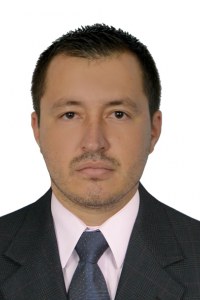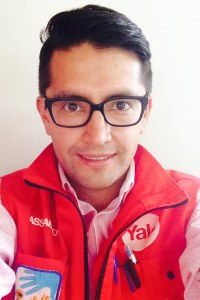
Introduction
Worldwide, the socially disadvantaged have less access to basic health resources and the health system as a whole. This is how sick and die more frequently than those who belong to groups that occupy more privileged social positions. This becomes more critical in some of the most vulnerable groups.
These inequalities have increased. Work can cause health disorders like stress, anxiety and muscle affectations, related to the organization, psychological demands, job control, and uncertainty about the future, social enterprise support, communication, recognition esteem, quality and leadership.
Health Impact Assessment (HIA) is a means of assessing the health impacts of policies, plans and projects in diverse economic sectors using quantitative, qualitative and participatory techniques.
HIA helps decision-makers make choices about alternatives and improvements to prevent disease/injury and to actively promote health. WHO supports tools and initiatives in HIA to dynamically improve health and well-being across sector.
Work is an important determinant of health. It can influence health positively or negatively. For most people work is essential for economic, social as well as physical wellbeing. Every year about 10 million of the 150 million workers in the European Community are affected by incidents, "accidents" or diseases at work.
Leather production includes many operations with different exposures, which can be harmful for the health of the workers, and particularly be carcinogenic Working as a shoe and leather worker is a highly demanding career path to pursue. Leather working is a trade. Prospective applicants may not realize the sheer amount of time and dedication necessary to create shoes and boots of high quality. Indeed, leather working is a skill that has been passed down from generation to generation of craftsmen [1]. Shoe and leather workers have several different job titles in the leather working industry. The most common job title is leather repairman, but other areas of expertise within the leather industry include orthopedic shoemaker, saddle maker, and luggage maker. All of these specialists use similar techniques in order to ply their trade masterfully. The difference lies in the scope of the project, which may or may not require operating heavy machinery[2-3].
Some compounds in the tanning process are considered as probably being carcinogenic to humans (some benzene-based dyes and formaldehyde) [4 ]. Besides these, scores of other chemicals and organic solvents such as chromate and bichromate salts, aniline, butyl acetate, ethanol, benzene, toluene, sulfuric acid and ammonium hydrogen sulfide are used in the tannery industry [5 ]. An important health risk factor for the tannery workers is occupational exposure to chromium, mainly in the organic Cr (Ш) form or in the protein bound-form (leather dust). Chromium may enter the body by inhalation, ingestion and by direct cutaneous contact.
Occupational Diseases and other Work-Related -Health
The effect that occupation may have on a worker's health is dependent on the exposure (expressed quantitatively) to relevant agents, and on host factors. Taking a history is often very important in identifying relevant exposures and linking them to ill-health.
The concept of "cumulative exposure" i.e. a quantitative measure of the intensity of exposure and the duration of exposure is important, since generally itis the main determinant of risk[6-9 ].
In workers of Marroquiner, Shoe Leather and Tannery, some examples follow - (starting with the lungs and skin, the organs of first contact for most chemical occupational exposures).
Health may be harmed by occupational exposures in many different ways, and practically any organ system can be affected. Occupational exposure to Cr (III o IV) increases the risk of dermatitis, Eczema/ dermatitis - This can be irritant e.g. caused by detergents, or allergic e.g. as caused by certain rubber chemicals, Asthma e.g. from glutaraldehyde in health careworkers, (the image shows a hospital radiographer loading in twin-packspray painting. Other are Allergic alveolitis e.g. inhalation.ulcers and perforation of the nasal septum and respiratory illnesses as well as increased lung and nasal cancers[6-15 ].
Other processesthat affectworker healthare Musculoskeletalsuch as, tenosynovitis and similar conditions, back pain from manual handling and Nervous and Mental such as: peripheral neuropathy e.g. caused by lead or n-hexane, nerve deafness induced by noise, mental -health e.g. caused by stress , or by chemical exposures such as solvents.
The purpose of the study was, therefore, to investigate the adverse health effects of exposure to basic tanning pigments and solvents, impact assessment in health workers shoe-leather, tannery, marroquiner industries and social determinants of health.
Methods
In a cross-sectional study, with a Questionnaire FOR ASSESSING PSYCHOSOCIAL RISKS AT WORK short version was used AGCIH companies. The questionnaire method psychosocial factors consist of six factors, each of which is rated on a scale score range between 0 and 10.
Characteristics of the population were studied.
Personal and occupational history: The personal history included details of personal characteristics, age, smoking history, alcohol and tobacco consumption and family history, socioeconomic status and living conditions details of job, duration and type of exposure and details of toxicants at the work place.
Clinical examination: A detailed physical examination of the nervous, respiratory, dermal and musculoskeletal system was conducted at a health examination camp set up at the work place industry.
The sample comprised 3 groups of study group 1 Marroquiner (49 subjects), group 2 Shoe Leather (51 subjects) and 20 Tannery, were consideredages 17to 55 years old.
In group 1 were 49 women studied, 19 women and 32 men in group 2, men and 20 for group 3.
Results
Population studied.
In group 1 (40.8%) were 49 studied, in group 2, 51 (42.5%) and 20 for group 3 (16.7%).
The mean age overall was 32.2 ± 8.2 years having an age range of 17-55 years old.
Number of children per group: In group 1 we observed that the average number of children is 1.31 ± 0.5 in group 2 is .73 ± .82 and Group 3 is de1.2 ± .7
Table1. Percentage of population studies study impact assessment in health workers shoe-leather, tannery, marroquiner and social determinants of health, 2013
|
school |
Group* |
Total |
||
|
N (%) |
||||
|
Marroquiner |
Shoe Leather |
Tannery |
||
|
primary |
7(43.75%) |
8(50.0%) |
1(6.3%) |
16(100.0%) |
|
secondary |
9(45.0%) |
8(40.0%) |
3(15.0%) |
20(100.0%) |
|
preparatory |
14(36.81%) |
20(53.63%) |
10(10.52%) |
44(100.0%) |
|
technical |
2(50.0%) |
1(25.0%) |
7(25.0%) |
4(100.0%) |
|
Higher technical college |
9(30.0%) |
13(43.33%) |
8(26.7%) |
30(100.0%) |
|
Higher college |
2(50.0%) |
1(25.0%) |
1(25.0%) |
4(100.0%) |
|
Pos graduate |
1(50.0%) |
1(50.0%) |
0(0%) |
2(100.0%) |
|
Total |
44(36.7%) |
52(43,0%) |
24(20%) |
120(100.00%) |
It can be seen that the study population has positive smoking. tannery workers have ahigher BMI (see table 2).
Table 2. Physical characteristics and smoking in health workers shoe-leather, tannery, marroquiner, 2013
|
Group* |
|||
|
Mean (SD) |
|||
|
Marroquiner |
Shoe Leather |
Tannery |
|
|
Age |
32±8 |
36±12 |
39±14 |
|
BMI |
18.5±3 |
20.3±2 |
28.3±5 |
|
Exposed (POE, years) |
10±5 |
15±7 |
20±3 |
|
Smoking (numberof cigarettesper day) |
7±5 |
18±3 |
23±3 |
The respiratory symptom were significantly reduced in the exposed workers marroquiner.The three groups reported smoking in the week, coupled with occupational exposure to solvents indicates that it may reduce respiratory function and more symptoms present as shown in Table 3.
Table3. Respiratory symptoms observed among the POE
|
Group n=120* |
|||
|
1(N, %) |
2(N, %) |
3(N, %) |
|
|
Nasal catarrh |
7.0 |
17.0 |
23.0 |
|
Dry/productive cough |
82.4 |
50.5 |
52.0 |
|
Throat irritation |
10.6 |
30.0 |
17.0 |
|
Chest congestion |
0.0 |
2.5 |
8.0 |
Note: groups studied Marroquiner(1), Shoe Leather(2), and Tannery(3)
Increases the risk of dermatitis, Eczema/ dermatitis nearly 18% (n = 35) of the shoe leather tanners reported dermatological diseases such as rashes and papules. The burning sensation was reported by 25 subjects (15%) in the exposed workers (shoe leather and tannery).
Psychosocial Dimensions.
The group of shoes leather and marroquiner samples satisfied with the content of his work and mentioned that the three spins unscheduled tasks per day causes them stress. In this study it was observed that in the section on psychological demands , insecurity about the future, support , ability and leadership the three spins appear unfavorable, was favorable communication with your manager , esteem and recognition of your work group only shoes leather is favorable.
One can see that in paragraph psychological demands of the three items appear unfavorable for job control leather workers report that they are so unlike the other groups, the uncertainty about the future all three groups reported having a disadvantage, as well as support and leadership ability, the variable that was favorably reported this communication in the three study groups and to respect and recognition of your work group only mentioned leather which is unfavorable(see table 4).
Table 4. Psychosocial Dimensions.
|
Section |
Psychosocial Dimensions |
Scores |
Scores For Population Reference |
||||
|
Marroquiner(1) |
Shoe Leather(2), |
Tannery worker(3) |
favorable |
intermediate |
unfavorable |
||
|
1 |
PSYCHOLOGICAL SITUATION |
11 |
23 |
12 |
DE 0-7 |
DE 8-11 |
DE 12-24 |
|
2 |
CONTROL ON THE JOB |
20 |
24 |
8 |
DE26-40 |
DE 19-25 |
DE 0-18 |
|
3 |
INSECURITY ON THE FUTURE |
12 |
16 |
12 |
DE 0-4 |
DE 5-9 |
DE 10-16 |
|
4 |
SOCIAL SUPPORT AND QUALITY AND LEADERSHIP |
32 |
25 |
0 |
DE 32-40 |
DE 25-31 |
DE 0-24 |
|
5 |
COMMUNICATION |
2 |
2 |
3 |
DE 0-2 |
DE 3-6 |
DE 7-10 |
|
6 |
RECOGNITION working |
13 |
10 |
8 |
DE 13-16 |
DE 10-12 |
DE 0-9 |
Discussion of Results
An important impact on health risk factor for the Marroquiner, Shoe Leather, and tannery workers is occupational exposure to chromium, pigment, solvents, detergents, and other toxic compounds[17-20].
Can be associated with certain characteristic symptoms such as dry cough, throat irritation and Nasal catarrh of the workers. Among the respiratory morbidity in the exposed group,it has been reported in the literature that it is the metabolism distribution and transport the toxic compounds.
The 80% of respondents mentioned that municipal and state governments enforce core labor standards in the formal sector 100% mentioned not knowing whether policies that ensure balance between work life and person conditions to improve quality of life in health. 50 % say they have not reduced the 100 % negative effects of insecurity.
Conclusions
These respiratory symptoms are intensified by smoking. The biomonitoring is recommended frequent in this population occupationally exposed
Acknowledgements
The workers and industry leather.
References
- 1. ALLI O., B. (2002): Principios fundamantales de salud y seguridad en el trabajo. Madrid, Ministerio de trabajo e inmigración.
- 2. DENZIN, N.K. (1975): The research act. Chicago, Aldine.
- 3. Issever H, Ozdilli K, Ozyildirim BA, Hapcioglu B, Ince N, Ince H, et al. Respiratory problems in tannery workers in Istanbul. Indoor Built Environ. 2007;16:177–83.
- 4. Kornhauser C, Katarzyna W, Kazimierz W, Malacara JM, Laura EN, Gomez L, et al. Possible adverse effect of chromium in occupational exposure of tannery workers. Industrial Health. 2002;40:207–13. International Agency for Research on Cancer (IARC) IARC Monograph on the evaluation on the carcinogenicity risk of chemicals to human. Suppl 17. Vol.142. Lyon: IARC; 1987. Overall evaluation of carcinogenicity: An updating of IARC Monograph.
- 5. Budhwar R, Das M, Bihari V, Kumar S. Exposure estimates of chrome platters in India:an exploratory study. Biomarkers. 2005;10:252–7.
- 6. Stern RM, Berlin A, Fletcher A. International conference on health hazards and biological effects of welding fumes and gases: Copenhagen 1821, February, 1985. Int Arch Occup Environ Health. 1986;57:237–46.
- 7. Angerer J, Amin W, HeinnrichRamm R. Occupational chronic exposure to metals. Arch Occupational Environ Health. 1987;59:503–12.
- 8. Lin SC, Tai CC. Nasal septum lesion caused by chromium among chromium electroplating workers. Am J Ind Med. 1994;26:221–8.
- 9. FERNÁNDEZ MUÑIZ, MONTES PEON Y VAZQUEZ ORDAS (2005).
- 10. IEEG (2004). Ordenamiento Ecológico del Estado de Guanajuato Guanajuato,
- 11. INEGI. 2004.Censos Económicos
- 12. INEGI. 2004. Encuesta Nacional de Ocupación y Empleo (ENOE). Promedio del III
- 13. Instituto de Ecología del Estado de Guanajuato.
- 14. Organización Mundial de Comercio. . 26 de mayo de 1997.Comité de Acuerdos Comerciales Regionales WT/REG/W/16
- 15. PEIRÓ, J.M. (1999): El modelo AMIG: Marco contextualizador del desarrollo y la gestión de recursos humanos en las organizaciones. Papeles del Psicólogo, 72, 315.
- 16. Plan de Desarrollo Institucional. PLADECL20102020.
- 17. PLAN DE ORDENAMIENTO TERRITORIAL Y ECOLÓGICO DEL MUNICIPIO DE LEÓN. 2007
- 18. RODRÍGUEZ, I.; GONZÁLEZMORALES. M.G. y CARBONELL, S. (2007): “El modelo AMIGO y la metodología PREVENLABPSICOSOCIAL” Seguridad y Salud en el Trabajo, 42.
- 19. SAUTER, S.L.; HURRELL, J.J.; MURPHY, L.R. y LEVI, L. (2001): “Factores psicosociales y de organización”. Enciclopedia de Salud y Seguridad en el Trabajo. Vol. II, Parte V, Capítulo 34. OIT y Ministerio de Trabajo y AA.SS..
- 20. Tratado de Libre Comercio para América del Norte. 27 Organización Mundial del Comercio (Tratado de Libre Comercio de América del Norte), 2002, http://www.sice.oas.org /summary/nafta_s/nafta08.asp).Trimestre de 2006 al 2008.
Papers relacionados














